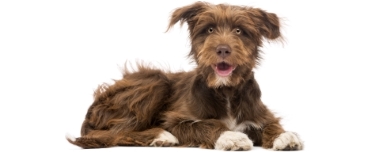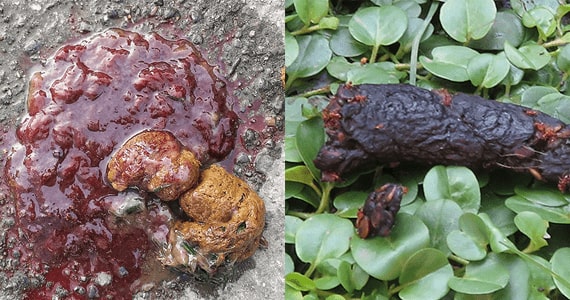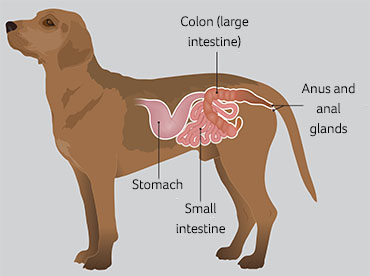Blood in your dog's stools

Overview
- Seeing blood in your dog’s stool (poo) can be worrying because most people associate it with serious illness.
- Contact your vet if you find blood in your dog’s stool, but don’t panic, there are lots of possible causes ranging from very minor to more serious.
- It can be very helpful to take a poo sample or a photograph of your dog's stool to show your vet.

Blood in a dog's poo and black poo (digested blood)
Why is there blood in my dog's stools?
Some of the conditions that cause blood in your dog's poo are listed below:
- Parvo (parvovirus) or another virus
- Anal gland problems
- Colitis (inflammation of the large intestine)
- Haemorrhagic gastroenteritis (HGE)
- An upset stomach from eating something they shouldn’t have, or something that is toxic
- Worms or another parasite
- Stomach ulcer (this can sometimes be a side effect of non-steroidal anti-inflammatory drugs)
- Bacterial gut infection (e.g. Salmonella)
- A rectal polyp (a harmless mass sitting just inside the bum)
- Anal furunculosis
- Constipation
- Food allergies
- Inflammatory bowel disease
- Gut blockage (foreign body)
- Mass around the anus (bum)
- Mass in the stomach or guts
- Bleeding/ clotting disorders.

Blood in your dog’s poo might be coming from their: stomach, intestines, colon, anus (bottom) or anal glands. Click image to enlarge.
Other symptoms to look out for
It's important to monitor your dog for other symptoms such as:
- Vomiting
- Pale gums
- Low energy (lethargy)
- Eating less than usual
- Drinking less or more than usual
- Bruising anywhere on their body
- Being unsteady on their feet.
When to contact your vet
Contact your vet if you see blood in your dog's poo. They will be able to check for more serious causes, such as parvovirus or a gut blockage.
It can be helpful to collect a sample of the poo show to your vet (or even a photograph if a sample isn’t possible).
You know your dog best. If they don’t have the symptoms listed above but you are still concerned it’s always best to contact your vet.
 Video found at youtu.be/qXH2fcE3kIE
Video found at youtu.be/qXH2fcE3kIE
Published: June 2019
Did you find this page useful?
Tell us more
Please note, our vets and nurses are unable to respond to questions via this form. If you are concerned about your pet’s health, please contact your vet directly.
Thank you for your feedback
Want to hear more about PDSA and get pet care tips from our vet experts?
Sign up to our e-newsletter
Written by vets and vet nurses. This advice is for UK pets only. Illustrations by Samantha Elmhurst.

